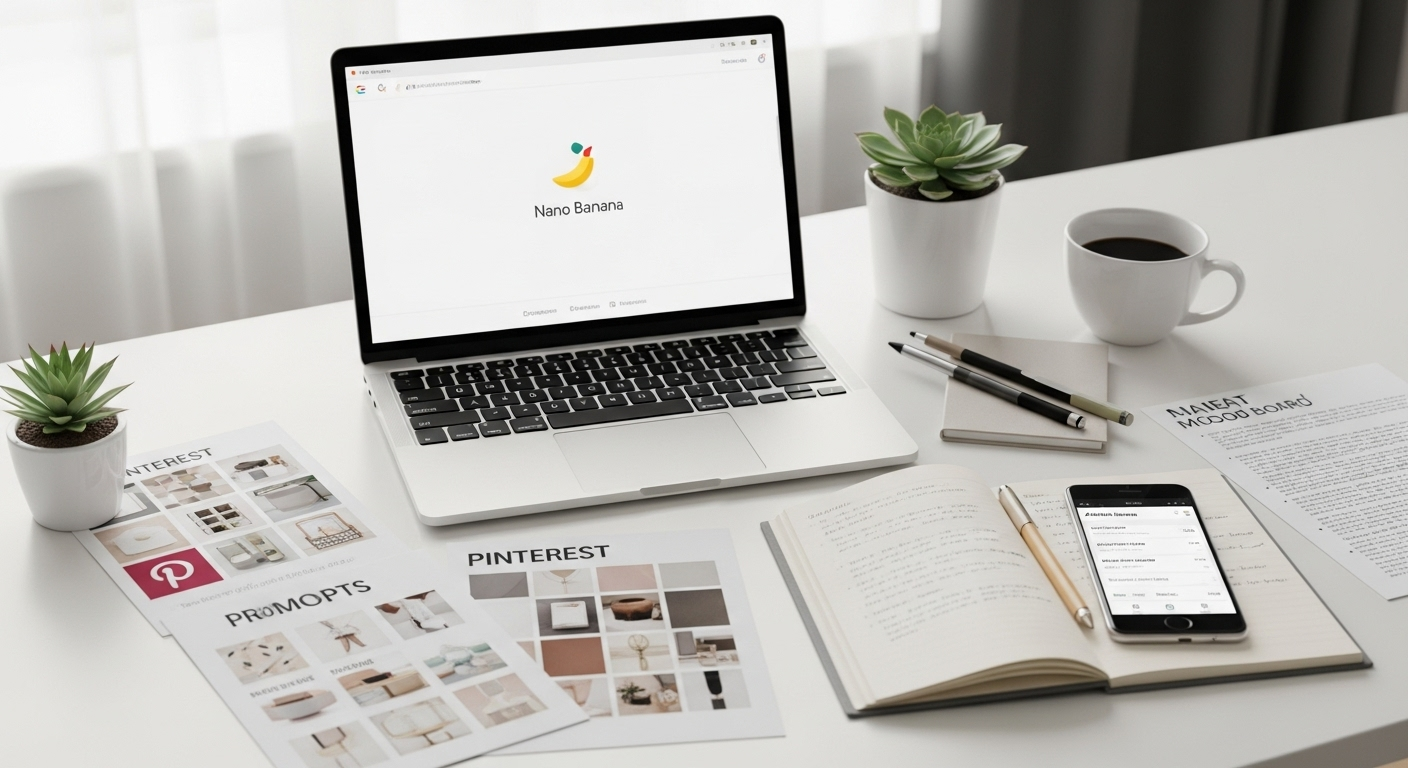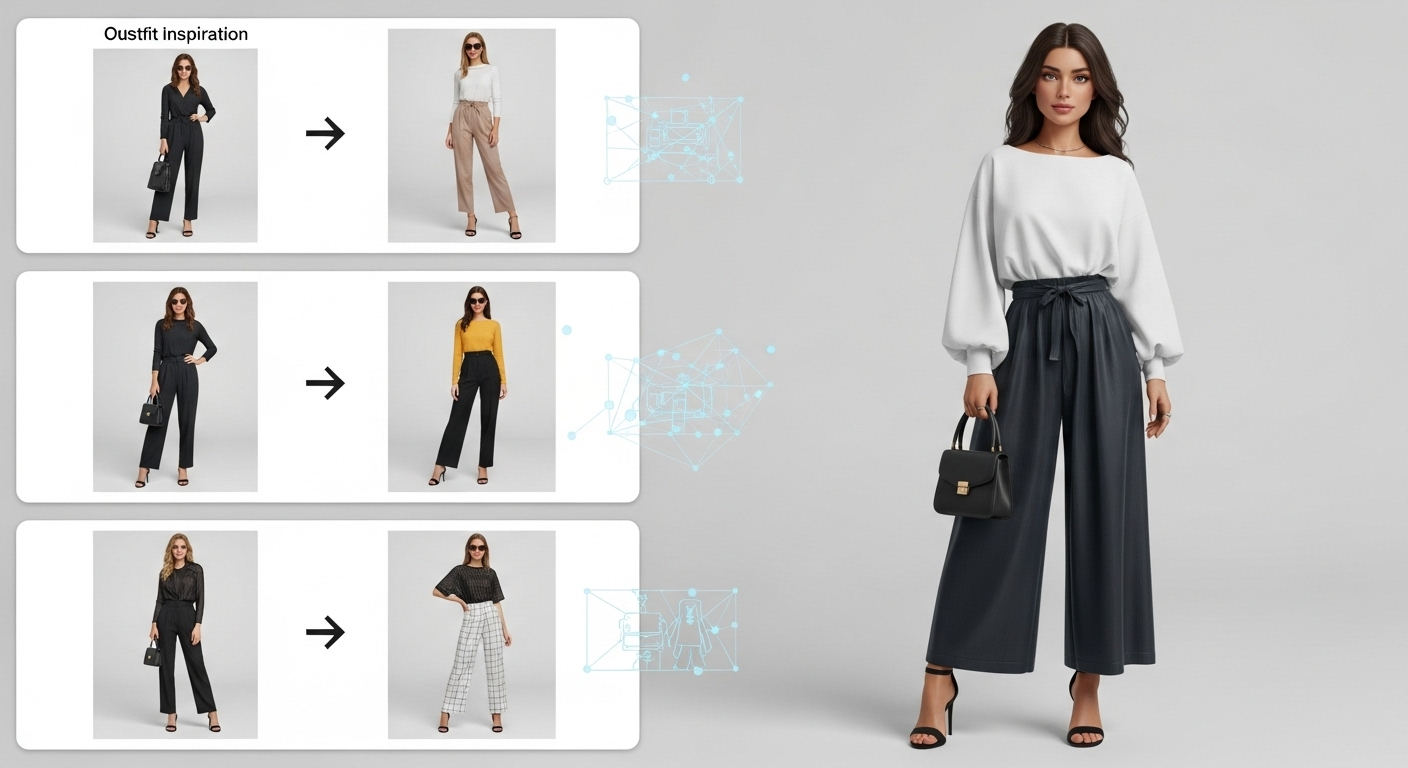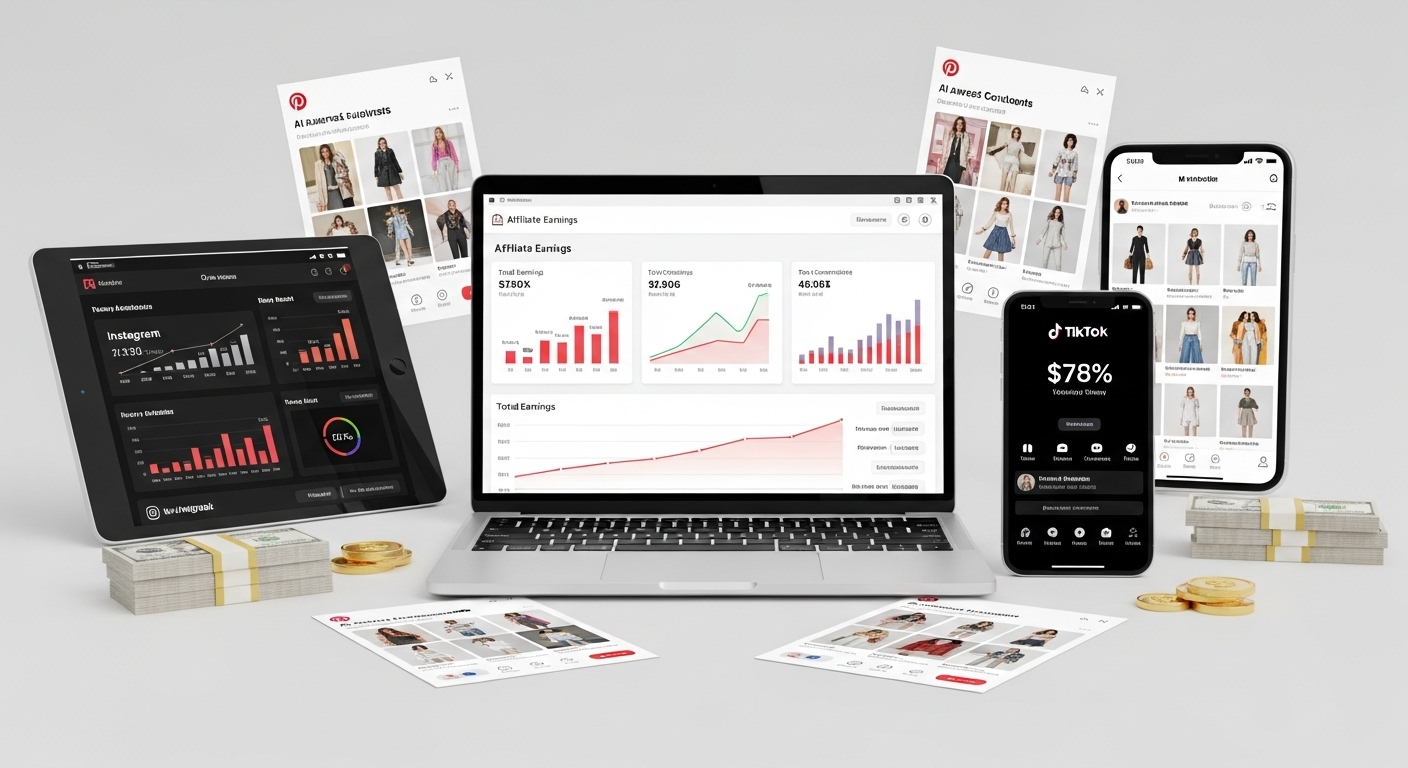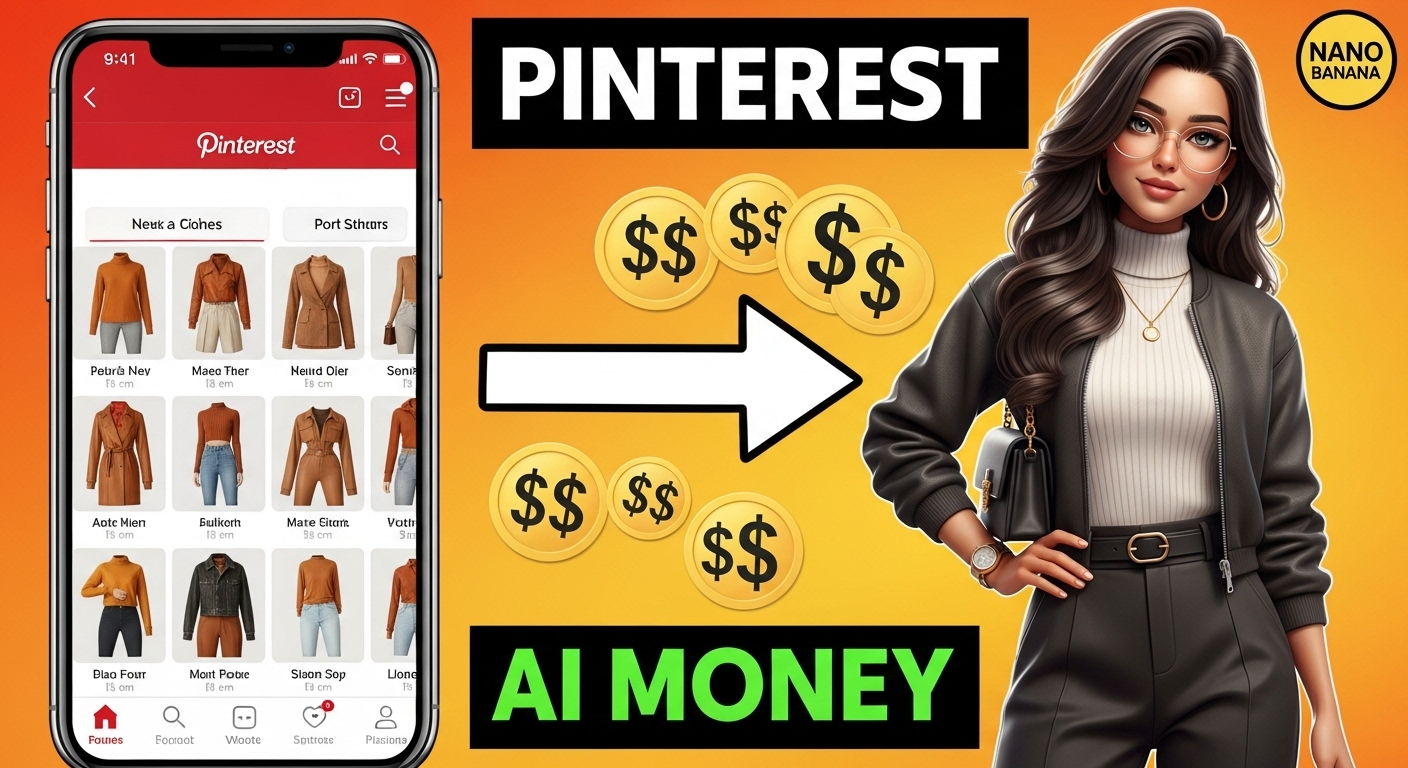How I use Google Nano Banana to transform Pinterest inspiration into profitable content
Those Pinterest outfits you’ve been saving for months can actually make you money, and I just figured out exactly how to make it happen. I’ve been experimenting with Google’s newest AI tool called Nano Banana, and the results have completely changed how I approach content creation and affiliate marketing.
Want to see the full process in action? Watch the complete video tutorial here where I walk through every step and show you my exact results.
The breakthrough came when I realized I could take those Pinterest fashion finds and put them directly onto my AI avatar to create professional-looking content that generates real income through affiliate partnerships, brand collaborations, and social media monetization. This method has been perfect for me because I needed a way to create consistent content without being camera-ready all the time, and it opens up so many income opportunities that I never had access to before.
Why This Approach Actually Works
The beauty of this system is that it solves multiple problems at once. You get to test fashion trends without buying everything first, create content on your own schedule without worrying about lighting or makeup, and build multiple income streams through various affiliate programs and brand partnerships. This method works particularly well for introverts who prefer staying behind the camera, busy parents who need flexible content creation options, or anyone who wants to scale their content production without burning out.
What makes this different from other AI content approaches is that you’re starting with real fashion inspiration that people are already engaging with on Pinterest, which means you’re creating content that has proven appeal. When you combine that with the professional quality that Nano Banana can achieve, you end up with avatar content that looks authentic and drives real engagement and sales.
Getting Started: What You Actually Need
The setup for this is surprisingly simple, which was one of the things that attracted me to this method in the first place. You need a Google account to access Nano Banana through the Gemini platform, a Pinterest account for finding outfit inspiration, and about fifteen minutes to create multiple pieces of content once you get the hang of the process.
I started with the free version of Google Gemini, which works fine for testing and learning the system. After I saw the potential and started creating content regularly, I upgraded to the paid version because it gives you more image generations and faster processing, but the free version is definitely enough to get started and see results.
Finding Pinterest Outfits That Convert to Sales
The key to making money with this method is being strategic about which Pinterest outfits you choose to recreate. Instead of just saving pretty pictures, you need to think like a business owner and consider the affiliate potential of each outfit you’re considering.
I focus my Pinterest searches on terms that have strong commercial intent, like “fall fashion 2025” for seasonal content that creates urgency, “Amazon fashion finds” for direct affiliate opportunities, “work from home outfits” for evergreen content that appeals to a broad audience, and “budget-friendly style” for content that appeals to cost-conscious shoppers. When I find an outfit that catches my eye, I make sure to note whether the items are from affiliate-friendly brands like Amazon, Shein, Fashion Nova, or other retailers that offer commission programs.
The goal is to choose outfits that your target audience would actually want to buy and recreate, not just outfits that look good in photos. This strategic approach to Pinterest research has made a huge difference in the success of my affiliate content because I’m creating content around products that people are already searching for and interested in purchasing.
Setting Up Google Nano Banana for Best Results
Nano Banana is Google’s newest AI image generation tool, and what makes it special is that it’s specifically designed for editing and transforming existing images rather than creating everything from scratch. This makes it perfect for the Pinterest outfit method because you can work with real fashion inspiration and your existing avatar to create realistic combinations.
To get started, you’ll go to Google Gemini and sign in with your Google account. Look for the “Try image editing with Nano Banana” prompt, which should appear prominently on the main page. If you don’t see it immediately, navigate to Tools and then Create Images to access the Nano Banana interface.
The interface is clean and straightforward, but the real skill comes in learning how to write prompts that generate professional-quality results. This is where most people struggle initially, but once you understand the prompt structure, you can create consistent, high-quality avatar content.

Creating Professional Avatar Outfits
The biggest mistake people make when starting with AI avatar content is writing generic prompts that produce generic results. If you just upload your avatar and a Pinterest outfit and write something like “put this outfit on my avatar,” you’re going to get results that look obviously AI-generated and unprofessional.
The secret to getting realistic, professional-looking results is writing detailed, specific prompts that give the AI enough information to create something that looks authentic. Instead of a basic request, I write prompts that include details about my avatar’s physical characteristics, the setting where the photo is taking place, the lighting conditions, the mood and energy I want to convey, and the technical specifications for a professional-quality result.
For example, instead of writing “I want her in this outfit,” I’ll write something like “I want her wearing this outfit, please use her face and body type. She’s 5’5″ with an athletic build and confident posture. She’s standing outside a French restaurant in Paris during fall season. Make it look high-end like a professional photoshoot, captured with a Canon 85mm lens with perfect studio lighting. Raw and crisp quality.” The difference in results between these two approaches is dramatic.
The detailed prompts help the AI understand not just what you want the avatar to wear, but how you want the final image to look and feel. This attention to detail is what separates amateur AI content from professional-quality content that can actually drive sales and engagement.
Scaling Your Content Creation
Once you have the basic process down, you can scale your content creation by turning each Pinterest outfit into multiple pieces of content. This is where the real efficiency of this method becomes apparent, because one outfit inspiration can become several different posts for various platforms and purposes.
I create different versions of each outfit by changing the setting, the pose, and the mood. For example, one outfit might appear in an office environment for professional content, in a coffee shop for lifestyle content, and in a home setting for casual content. I also create different types of shots, like full body images that show the complete outfit, portrait shots that focus on the styling details, and mirror selfie-style images that work well for social media.
This multiplication approach means that fifteen minutes of work can generate content for Instagram posts, TikTok videos, Pinterest pins, YouTube thumbnails, and blog post images. The time investment pays off across multiple platforms and income streams.

Bringing Your Avatar Content to Life with Video
Static images are great, but video content tends to perform better on most social media platforms, so I use Google’s Veo 2 tool to turn my static avatar images into moving video content. This is probably my favorite part of the entire process because it’s so simple but the results are impressive.
After I create my avatar outfit in Nano Banana, I save the image and then go to AI Studio Google to access Veo 2. I upload my static avatar image and add a simple prompt like “She’s posing for a video” or “She’s walking confidently.” I make sure to select the 9:16 aspect ratio because that works best for TikTok, Instagram Reels, and YouTube Shorts.
I usually generate two or three different video versions of each outfit so I have options when I’m editing my final content. The videos are short, but they add movement and life to the avatar content that makes it much more engaging than static images alone.
Monetization Strategies That Generate Real Income
The content creation process is fun, but the real goal is generating income, and there are several proven strategies for monetizing AI avatar content that I’ve been testing and refining.
Amazon affiliate marketing has been my most successful monetization method so far. When I create avatar content featuring specific outfit pieces, I research similar items available on Amazon and include affiliate links in my content descriptions. My avatar content provides the styling inspiration, and the affiliate links provide an easy shopping solution for people who want to recreate the looks.
Brand partnerships have also become a significant income source. I reach out to brands whose styles I’ve featured in my avatar content, and many of them are interested in working with creators who can produce consistent, professional-looking content that showcases their products effectively. The advantage of avatar content for brand partnerships is that you can create content on demand without scheduling conflicts or location limitations.
Social media platform monetization is another income stream I’m developing. Instagram Shopping tags, TikTok Shop affiliate links, Pinterest Product Rich Pins, and YouTube affiliate descriptions all work well with avatar content. The key is creating content that feels natural and helpful rather than overly promotional.

Building a Sustainable Content Business
The most important thing I’ve learned through this process is that success comes from treating this as a real business rather than just a creative experiment. That means being strategic about content planning, tracking what works and what doesn’t, and continuously optimizing your approach based on actual results.
I batch create content to maximize efficiency, planning seasonal content in advance and creating multiple pieces during each Nano Banana session. I track engagement rates, affiliate click-through rates, and overall income generation to understand which types of avatar content perform best with my audience.
The goal is building a sustainable system that can generate consistent income without requiring you to be “on” all the time. AI avatar content makes that possible in a way that traditional content creation methods often don’t, especially for people who need flexibility in their work schedules.
Getting Started With Your First Avatar Outfit
If you’re ready to try this method, start small with one Pinterest outfit that aligns with affiliate opportunities in your niche. Focus on learning the prompt writing process and understanding how Nano Banana responds to different types of instructions. Create one piece of content, share it with your audience, and pay attention to how it performs compared to your other content.
The technology learning curve is manageable, and the business strategy can be developed over time as you gain experience and see what works best for your specific audience and niche. The most important thing is to start experimenting and learning rather than waiting until you have everything figured out perfectly.
Ready to see this entire process in action? Watch the complete step-by-step video tutorial where I show you exactly how I create avatar content from Pinterest inspiration, including my exact prompts and real-time results.
The combination of Pinterest inspiration and Google Nano Banana creates opportunities for content creators that didn’t exist even a few months ago. Whether you’re looking for more flexibility in your content creation process, wanting to test new monetization methods, or simply curious about what’s possible with AI tools, this approach offers a practical way to start building profitable avatar content today.
